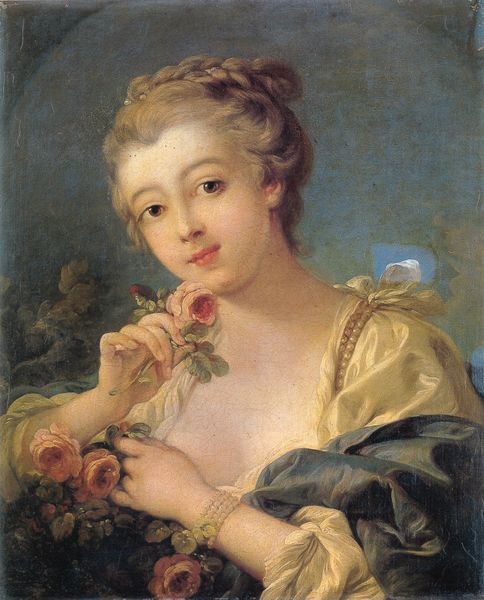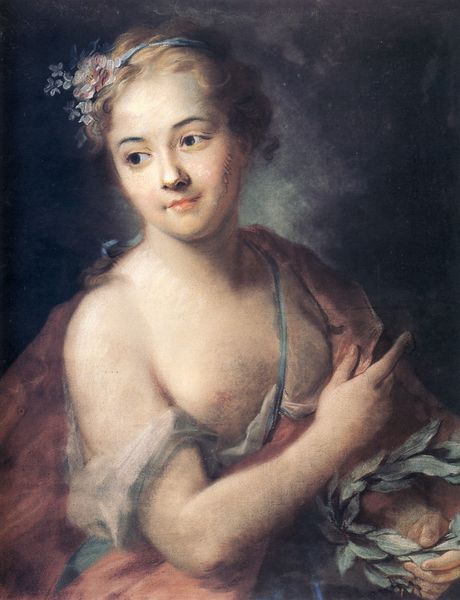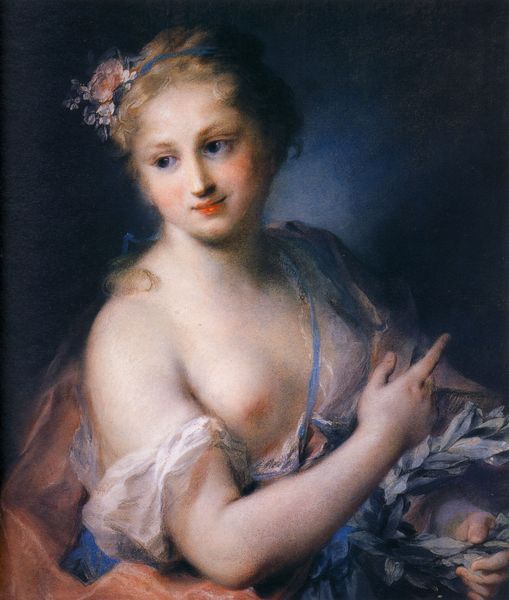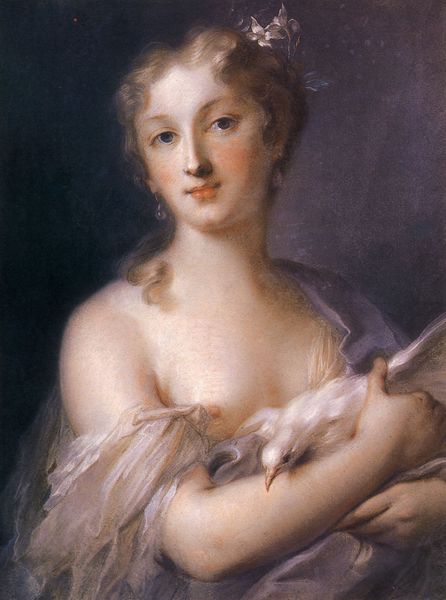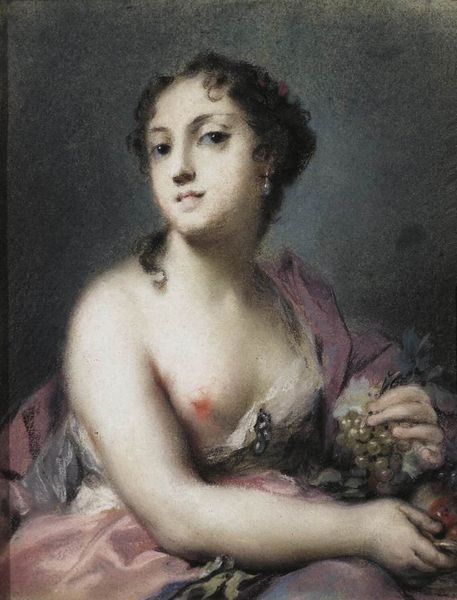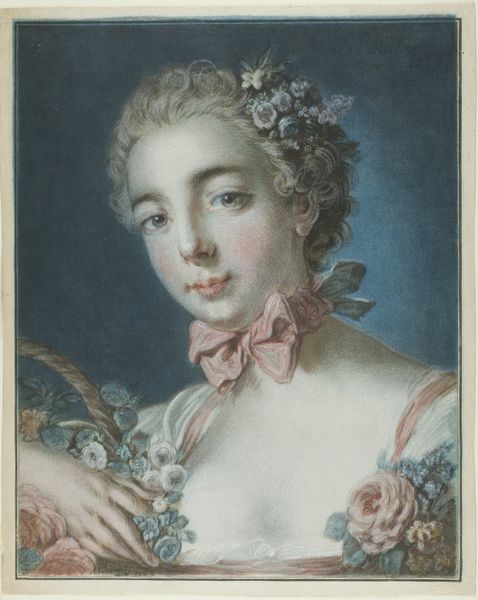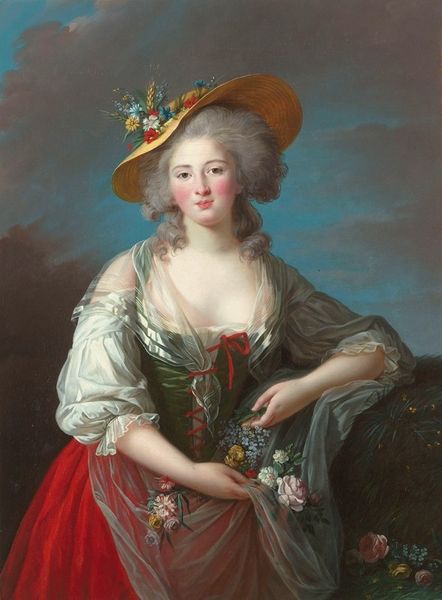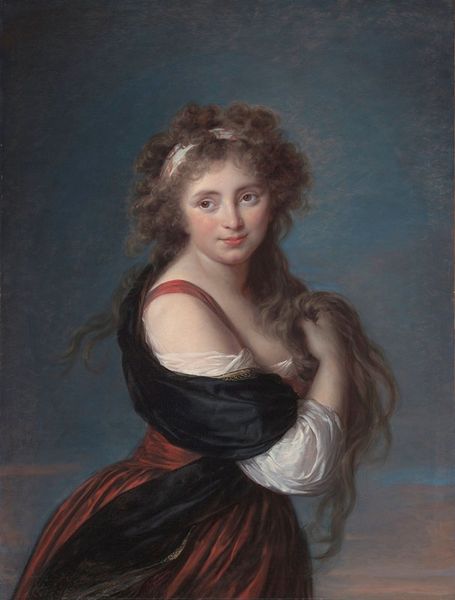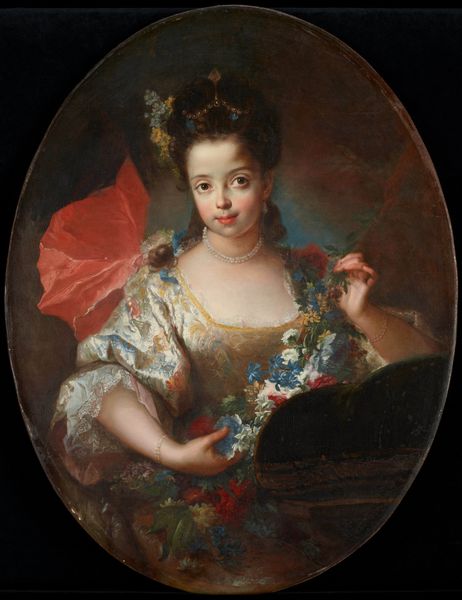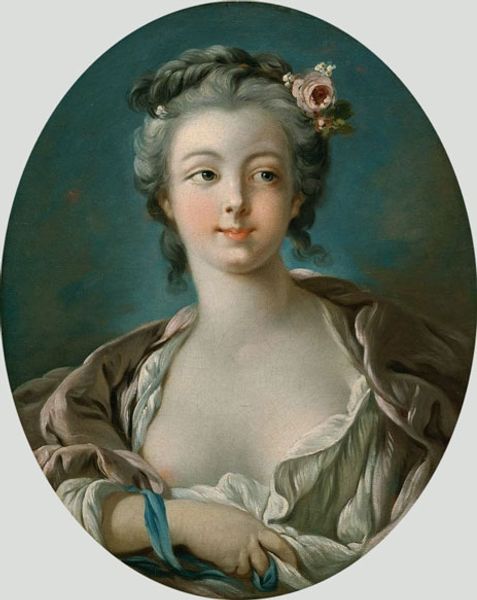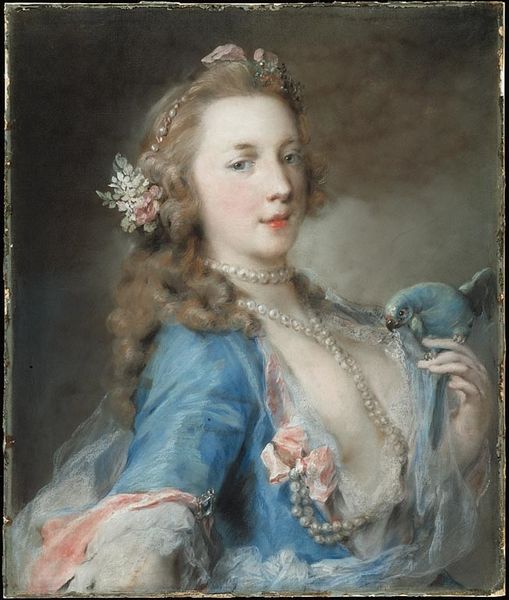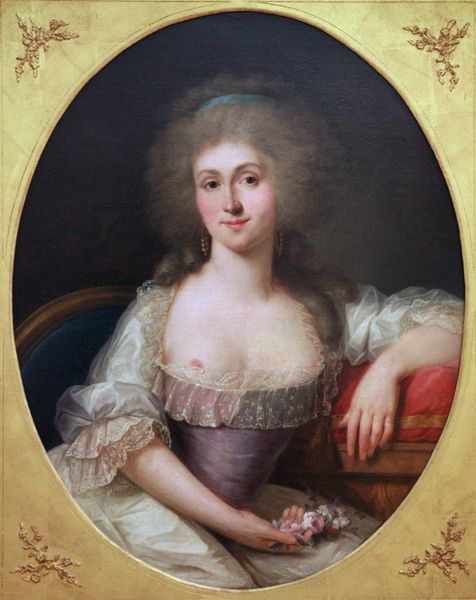
Copyright: Public domain
Curator: Here we see Rosalba Carriera’s “Allegory of Music,” an oil painting created around 1712. My first thought is that the bright and joyous portrait practically embodies the spirit of Rococo. What’s your initial take? Editor: Playful indeed, yet I sense underlying tension. The overt sensuality of the female figure clashes with the constraints of early 18th-century societal expectations for women. It’s a complex interplay. Curator: Good point! We are looking at a period deeply rooted in patronage and courtly life. Artists like Carriera navigated the complexities of pleasing their wealthy clientele while attempting something meaningful or even subversive. What can you tell me of its patronage? Editor: Well, Carriera made the most of operating within those patronage networks of Venice. The flourishing artistic landscape of Venice, heavily dependent on noble patronage, allowed a space for this representation of a bacchante and a nod to freedom of expression in artistic form. Curator: Her mastery with oil paints creates a sense of luminous skin, practically radiating from the canvas, doesn’t it? This wasn't just for wealthy nobles and diplomats either. Editor: Exactly, and look at her gaze. It isn’t vacant. It suggests self-awareness, and perhaps even agency— challenging typical gendered objectification through subtle means. Curator: She cleverly integrates the imagery associated with Bacchus – grapes and tambourine – placing it firmly within the context of Venetian art and culture. The use of such recognizable symbols ensured the artwork would have resonated with viewers of the time. What can you tell me about the tambourine? Editor: The tambourine, typically associated with celebration, suggests that the artist attempts to frame creative expression and liberation as inherent in a joyful celebration of art. Music-making, through her lens, might be inherently tied to social or perhaps political rebellion against constraints. Curator: I find the inclusion of vibrant flowers as well interesting, serving as symbols of vitality and creativity and, frankly, adding to the romanticism. They're very evocative of both physical beauty, fleeting, but also lasting artistic creativity. Editor: Exactly, a reminder that creativity persists. Overall, though apparently decorative, the work makes layered interventions that subtly question the status quo of art and identity politics in Venetian art and society. Curator: Yes. Thanks, that’s given me something to think about concerning her place in the 18th century art market. Editor: Always a pleasure to see the history echoed within art!
Comments
No comments
Be the first to comment and join the conversation on the ultimate creative platform.
